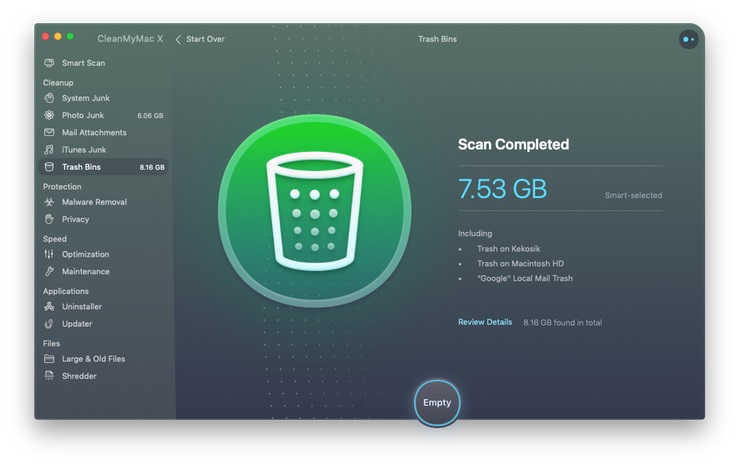
If your Mac says that the file is in use
- Quit any app that you were using with the file, then empty the Trash.
- If that doesn't work, the app might have one or more background processes that are using the file. Restart your Mac, then empty the Trash.
- If that doesn't work, you might have a startup item or login item that is using the file. To temporarily prevent such items from opening automatically, start up in safe mode by holding down the Shift key while your Mac starts up. Then empty the Trash and restart your Mac normally.
If you can't delete the file for other reasons
Force Delete Trash Mac

Mac App Delete

How to delete a Mac app using Launchpad You can also delete an app using Launchpad, which shows all your apps in an iOS like interface. To open Launchpad, click on F4 (the button that shows a grid. Use Spotlight to find and launch Terminal on your Mac. Enter the following command into terminal without hitting Enter afterward. Please note that there is a space after R. Make sure you add a space after R or this command will not work. Control-click on your Trash icon to open it. How to empty the trash on your Mac. Click and hold on the Trashcan icon in the Dock.; A popup will appear that says Empty Trash.Select it. (You can also empty the Trash from any open Finder window by holding down the command and shift keys and pressing delete.).
How To Force Empty Trash On Mac
- Start up from macOS Recovery by holding down Command-R while your Mac starts up.
- When the macOS Utilities window appears, select Disk Utility and click Continue.
- In Disk Utility, select the disk that contains the file that you want to delete. Then use the First Aid feature of Disk Utility to repair that disk.
- Quit Disk Utility, then restart your Mac and empty the Trash.